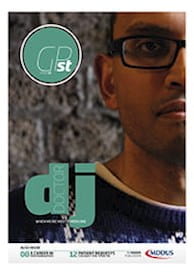
MR MCKAY sees you in a booked-on-the-day appointment. He opens with: “Doctor, this won’t take long. I’ve had a cough for a few days, but the cough’s getting worse and it’s keeping me up. So I’ve just come for a few of those antibiotics like Dr Smith usually gives me.”
Mr Jamieson has managed to get one of the urgent appointments. He looks a bit furtive, and his opening remarks are: “Doc, sorry to bother you. My mum tipped my tablets down the toilet when she was cleaning. I just need a few of me mazzies to tide me over. Thirty should be more than enough.”
Mrs Wallace has booked a routine appointment to see you. She says: “I’m glad to be able to speak to a sensible doctor. I was at the out-of-hours with my sciatica and just got fobbed off with tablets. This pain isn’t getting any better. I’ve been googling it, and it’s clear I need a scan. So that’s about it really.”
The dilemma
General practice seems to attract doctors who like people – and who want to be liked themselves. Fortunately, in many of our consultations we can happily say “yes” to our patients’ own ideas about how they should be treated. The right thing tends to be the popular option.
But what happens when there is a good professional reason to decline a patient’s expressed request?
It is tempting to resolve this by convincing ourselves that the situation isn’t as it seems: e.g. “your spit has been green, so I’m happy to give you an antibiotic”. (Read the NICE guideline if you don’t know why this may be wrong.)
Assuming our clinical assessment backs up the initial judgement, we then face the dilemma of meekly acceding to our patient’s request or holding our ground. A recent finding that patient satisfaction scores often correlate with increased antibiotic prescribing (at the practice level) has only intensified the dilemma.
We can’t get off the medico-legal hook just by saying “Yes” all the time, however. We can be sued for prescribing an unnecessary antibiotic if the patient develops side-effects. Or we can be sued by benzodiazepine users, for example, who may allege that they weren’t properly counselled about the risks of addiction.
The ethical dilemma here is to balance the principle of supporting patient autonomy versus non-maleficence (do no harm) and/or distributive justice (being thoughtful with NHS money or bearing down on the risk of antibiotic resistance to the population).
Some guiding principles
Below are some principles to guide our consultation behaviour when faced with patient demands.
• Acknowledgement response. Consider early deployment of the “acknowledgement response”. This is a statement that combines a comment showing we have understood the request with a signpost that we need to do some clinical work before coming to a decision.
“So your cough is keeping you up, and you were thinking some antibiotics might sort it out.”
“That’s right doc.”
“Ok, so let me find out a bit more about the cough, and then I’ll check your chest, and then we’ll see what’s what”.
“Can’t you just write out the script, like Dr Smith used to do?”
“I’d prefer to find out what’s actually going on. It won’t take long, and then we’ll know what we are dealing with.”
“Fair enough doc.”
• Explore the thinking behind the patient’s request. For example: “You’ve asked me about a scan, and that sounds very important to you. Would you be able to tell me what you are hoping a scan will show?”
• Perform a thorough examination (if relevant). Examine the relevant part or system thoroughly. This works for the antibiotic and “scan” examples above but is not so relevant to the benzodiazepine case. You can then refer to the exam when attempting to reach common ground with the patient. For example: “I’ve had a thorough listen to your chest, and I am pleased to say there are no signs of infection in your lungs just now.”
• Educate the patient about the clinical rationale/current practice. A good example here is with MRI scans. Few patients will have a detailed understanding of exactly when such a test is clinically indicated, and how it depends on the severity of their symptoms, the length of time they have been present, and so on. The mindset is: “Surely it will show up on a scan”. They are unlikely to appreciate that a scan can show up an “incidentaloma” i.e. a finding that is hard to ignore, but of no clinical significance. This reasoning is reflected in policies and guidelines for GPs (e.g. those issued by the Royal College of Radiologists) – which most patients will not have read. The trick is to explain this to the patient in a way they will easily understand.
“MRI scans can be a good test, but right now that would not be the best way of treating you.”
“How so, doctor?”
“An MRI (of your back) is going to show up some wear and tear in any patient over 25 years old. Our guidelines are based on research from patients like you. If there is no evidence of nerve damage, as in your case, the best outcomes come from getting mobile, and seeing how it goes. We will re-examine you in six weeks if it isn’t settling, or sooner if it gets worse.”
“Does that mean I’ll not get a scan?”
“I expect you will not need one. But if things drag on or get worse, then an MRI could be a good idea, and if so, of course we’ll arrange it”.
• Use “not” instead of “no”. When explaining your thinking, it will usually be profitable not to sound totally inflexible. The use of the word “not” in your explanation can help.
“A scan can be a good idea in backache with sciatica. Based on what you’ve told me and my careful examination, I am sure we are not at that stage yet.”
“What makes you so sure doctor?”
“Let me explain my thinking…”
• When you can’t reach common ground. There are times when reason doesn’t get us to common ground – and not just with benzodiazepine addicts. The conversation seems to be a broken record. In essence, the consultation is over. There is nothing we can say or do that will make this patient happy. One approach is to point this out to the patient.
“So it looks like you won’t be happy if you don’t get a scan, and as I’ve mentioned, it is my opinion that this is not an appropriate investigation for you at the minute.”
“Yeah. So what now?”
“Well that was what I was going to ask you. Can you see any value in carrying on this conversation?”
“So you’re not going to send me for a scan?”
“Not just now”
“Well that’s been a waste of time. I’m off. I’m not happy you know doctor”.
Documentation
Careful documentation has two important benefits. First, the patient may go on to consult with a colleague and if we have documented carefully that colleague can back us up (if appropriate, as it will usually be). Second, in the event of a letter of complaint or from a solicitor we have evidence to refute any alleged substandard practice. Important things to document include:
- Patient’s specific request.
- Findings from the thorough examination which led to our clinical opinion.
- Why we came to the conclusion that we reached.
- What we told the patient.
- Details of the safety netting discussion.
Sum up
I am a GP appraiser and if a practising GP has not declared any complaints in the last five years, I gently enquire: “Why not?” The GP’s job is to give patients our opinions. In most consultations these are agreeable to the patient. Sometimes they are not. On those occasions, we have a duty to prioritise doing the right thing over doing the popular thing.
Dr Malcolm Thomas is a GP and medical director of Effective Professional Interactions, specialising in training for consultation effectiveness and professional skills for doctors
This page was correct at the time of publication. Any guidance is intended as general guidance for members only. If you are a member and need specific advice relating to your own circumstances, please contact one of our advisers.
Read more from this issue of Insight Primary

Save this article
Save this article to a list of favourite articles which members can access in their account.
Save to library


